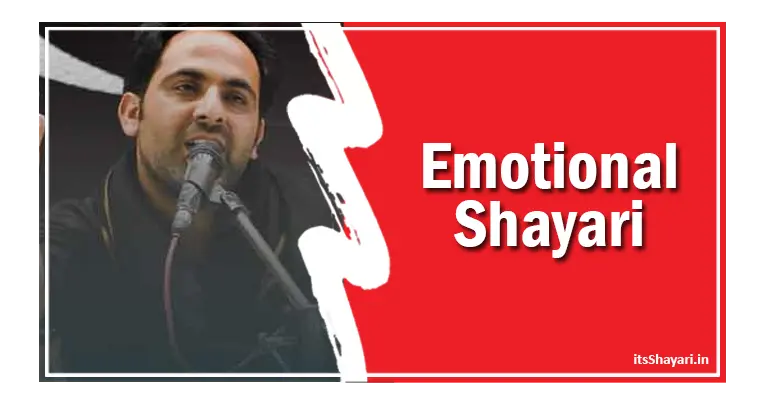![[445+] Log Kya Kahenge Quotes In Hindi](https://itsshayari.in/wp-content/uploads/2022/12/445-Log-Kya-Kahenge-Quotes-In-Hindi.webp)
Motivate Yourself 💪
![[70+] Selfish Fake Friends Quotes In Hindi Hate Friendship Status For Matlabi Dost Marathi](https://itsshayari.in/wp-content/uploads/2022/04/70-Selfish-Fake-Friends-Quotes-In-Hindi-Hate-Friendship-Status-For-Matlabi-Dost-Marathi.webp)
[70+] Selfish Fake Friends Quotes In Hindi | Hate Friendship Status For Matlabi Dost Marathi
हैलो प्रिय! आज हम पेश कर रहे हैं खास नकली दोस्तों के लिए कुछ अनोखे कोट्स और शायरी हिंदी में। मुझे आशा है कि ये
![[65+] Revenge Karma Quotes In Hindi Bure Karmo Ka Fal Status English](https://itsshayari.in/wp-content/uploads/2022/05/65-Revenge-Karma-Quotes-In-Hindi-Bure-Karmo-Ka-Fal-Status-English-.webp)
[65+] Revenge Karma Quotes In Hindi | Bure Karmo Ka Fal Status English |
प्रिये! जैसा कि हम जानते हैं कि कर्म हमारे जीवन का एक मूल्यवान हिस्सा है, जब आपने अपना जन्म केवल कर्म करने के लिए इस

[60+] Birthday Wish Friend In Hindi | Best Shayri Wishes For Bestie English | Special Happy Shayari Quotes Friends Ke Liye |
Let’s Wish to Your best friend, happy birthday, on the friend’s birthday wishes in Hindi event, make this beautiful day a special day for your

[35+] Killer Silent Quotes In Hindi | Deep Silence Pain Feeling Shayari | 2 Line Chup Rehna English Thoughts |
We are presenting the best “silence quotes in Hindi”. we all try to be silent at some moment of life because of an argument may

[45+] Married Life Husband Wife Quotes In Hindi | Importance Of Romantic Husband’s Love Status |
पति-पत्नी का असली रिश्ता सबसे अच्छे और दीर्घकालिक संबंधों में से एक होता है, कभी मीठा मना होता है तो कभी खट्टा होता है, लेकिन
Fall In Love With Shayari 💞
![[75+] Ghamand Status in Hindi Ego Quotes and Shayari in Hindi पैसे का घमंड स्टेटस इन हिंदी](https://itsshayari.in/wp-content/uploads/2022/06/75-Ghamand-Status-in-Hindi-Ego-Quotes-and-Shayari-in-Hindi-पैसे-का-घमंड-स्टेटस-इन-हिंदी-.webp)
[75+] Ghamand Status in Hindi / Ego Quotes and Shayari in Hindi / पैसे का घमंड स्टेटस इन हिंदी
We are presenting some best and unique “Ego” related status. It also contain with Quotes and Shayari in Hindi with attractive images which you can

[50+] किसी को जलाने की एटीट्यूड शायरी | Logo Ko Jalne Wali Shayari | Matlabi Jalane Wale Status In Hindi |
Let the jealous buddies feel more and more jealous on you by these special new jalane wale status in Hindi language. If you are trying
![[95+] Happy Birthday Shayari In Hindi हैप्पी बर्थडे रोमांटिक शायरी इन हिंदी Shayri Wala SMS Pdf](https://itsshayari.in/wp-content/uploads/2022/05/95-Happy-Birthday-Shayari-In-Hindi-हैप्पी-बर्थडे-रोमांटिक-शायरी-इन-हिंदी-Shayri-Wala-SMS-Pdf-.webp)
[95+] Happy Birthday Shayari In Hindi | हैप्पी बर्थडे रोमांटिक शायरी इन हिंदी | Shayri Wala SMS Pdf |
नमस्ते आगंतुकों! इस लेख में, हम आपको हैप्पी बर्थडे शायरी हिंदी में प्रस्तुत कर रहे हैं, हम आपसे अनुरोध करते हैं कि इन जन्मदिन मुबारक
![[75+] Good Morning Love Shayari In Hindi Miss You Romantic Lovely Shyari Sms](https://itsshayari.in/wp-content/uploads/2022/03/75-Good-Morning-Love-Shayari-In-Hindi-Miss-You-Romantic-Lovely-Shyari-Sms-.webp)
[75+] Good Morning Love Shayari In Hindi | Miss You Romantic Lovely Shyari Sms |
अगर आप किसी खास के साथ हैं प्यार करते हो और आप अपने सुबह जल्दी करने के लिए प्यार भरे. तो आप सही पृष्ठ पर

[100+] Single Shayari Boy Status In Hindi | I Am Alone Person Love Attitude Life Quotes |
दोस्तो सिंगल जैसा कि हम जानते हैं कि जीना सिर्फ एक पाप नहीं है, दुनिया में कई लड़के और लड़कियां हैं, जो जीवन भर अकेले
![[360+] Happy Birthday Wishes For Wife In Hindi Language पत्नी को जन्मदिन की शुभकामनाएं](https://itsshayari.in/wp-content/uploads/2022/12/360-Happy-Birthday-Wishes-For-Wife-In-Hindi-Language-पत्नी-को-जन्मदिन-की-शुभकामनाएं-.webp)

![[85+] Chanakya ThoughtsQuotesSayings For Students In Hindi](https://itsshayari.in/wp-content/uploads/2022/11/85-Chanakya-ThoughtsQuotesSayings-For-Students-In-Hindi-.webp)
![[3000+] Top New Best Status In Hindi](https://itsshayari.in/wp-content/uploads/2023/03/3000-Top-New-Best-Status-In-Hindi.webp)

![[50+] Bhai Ke Liye Status छोटे के लिए स्टेटस बड़े भाई पर अनमोल वचन सुविचार इन हिंदी शायरी](https://itsshayari.in/wp-content/uploads/2022/05/50-Bhai-Ke-Liye-Status-छोटे-के-लिए-स्टेटस-बड़े-भाई-पर-अनमोल-वचन-सुविचार-इन-हिंदी-शायरी-.webp)

![[75+] True Love Quotes In Hindi Language डीप इमोशनल लव गोल्डन कोट्स इन हिंदी](https://itsshayari.in/wp-content/uploads/2022/08/75-True-Love-Quotes-In-Hindi-Language-डीप-इमोशनल-लव-गोल्डन-कोट्स-इन-हिंदी-.webp)
![[17+] खतरनाक मोटिवेशनल शायरी Self Motivation Motivational Shayari In Hindi On Success](https://itsshayari.in/wp-content/uploads/2022/04/17-खतरनाक-मोटिवेशनल-शायरी-Self-Motivation-Motivational-Shayari-In-Hindi-On-Success-.webp)

![[35+] Self Dependent Quotes In Hindi Motivational Success For Students Status](https://itsshayari.in/wp-content/uploads/2022/04/35-Self-Dependent-Quotes-In-Hindi-Motivational-Success-For-Students-Status-.webp)

![[40+] Breakup Motivational Quotes In Hindi Girlfriend True Love Painful Break Up Status](https://itsshayari.in/wp-content/uploads/2022/07/40-Breakup-Motivational-Quotes-In-Hindi-Girlfriend-True-Love-Painful-Break-Up-Status.webp)

![[44+] Welcome Status For New Born Baby Boy In Hindi Language न्यू बोर्न बेबी स्टेटस इन हिंदी नई बॉर्न वेलकम शायरी फॉर बेस्ट विशेस](https://itsshayari.in/wp-content/uploads/2022/04/44-Welcome-Status-For-New-Born-Baby-Boy-In-Hindi-Language-न्यू-बोर्न-बेबी-स्टेटस-इन-हिंदी-नई-बॉर्न-वेलकम-शायरी-फॉर-बेस्ट-विशेस-.webp)
![[50+] Marriage Anniversary Wishes In Hindi Shaadi Ki Salgirah Per Shubhkamnaen For Bua And Fufa Ji](https://itsshayari.in/wp-content/uploads/2022/06/50-Marriage-Anniversary-Wishes-In-Hindi-Shaadi-Ki-Salgirah-Per-Shubhkamnaen-For-Bua-And-Fufa-Ji-.webp)

![[685+] Mood Off Shayari Status In Hindi](https://itsshayari.in/wp-content/uploads/2022/12/685-Mood-Off-Shayari-Status-In-Hindi.webp)
![[210+] दूरी मिस यू शायरी हिंदी में बहुत ज्यादा दर्द भरा दोस्ती एसएमएस करने वाली दोस्त](https://itsshayari.in/wp-content/uploads/2022/11/210-दूरी-मिस-यू-शायरी-हिंदी-में-बहुत-ज्यादा-दर्द-भरा-दोस्ती-एसएमएस-करने-वाली-दोस्त-.webp)
![[50] Whatsapp Shayariyan In Hindi Language Best Whats Up Status Shayari About Attitude](https://itsshayari.in/wp-content/uploads/2022/04/50-Whatsapp-Shayariyan-In-Hindi-Language-Best-Whats-Up-Status-Shayari-About-Attitude.webp)